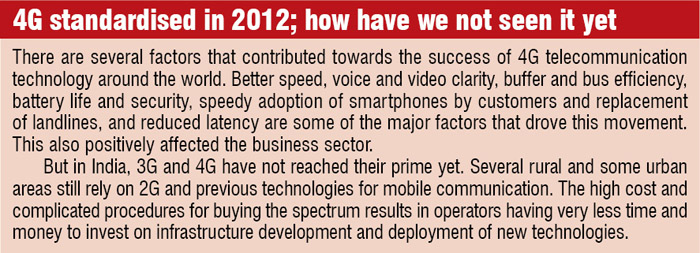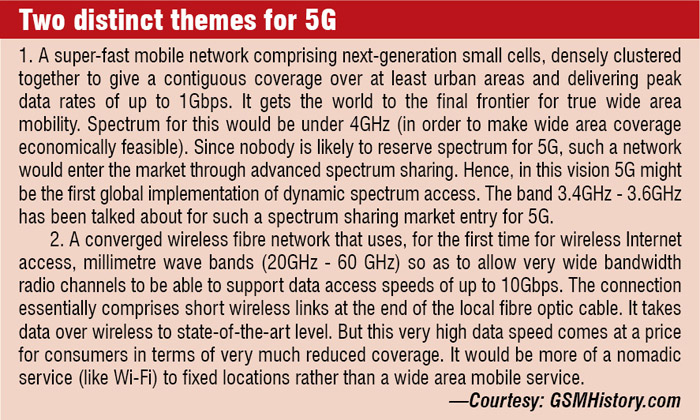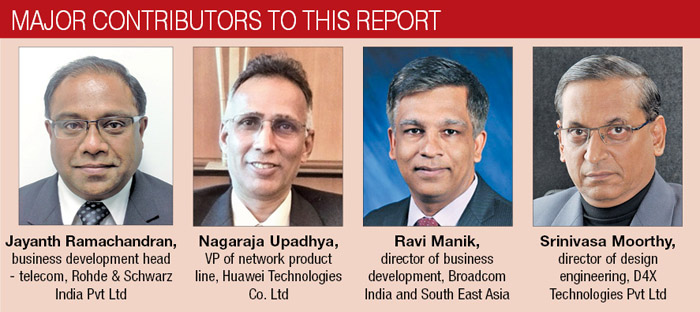

Apart from having better speed, this technology is going to focus on having low latency (of a few milliseconds), high quality of data transfer, better bandwidth and network capacity (number of connections that can be implemented). These features are an asset to business models for cyber physical systems or the Internet of Things (IoT) and machine-to-machine (M2M) communication.
Next Generation Mobile Networks (NGMN) expects customer requirements of 5G in the 2020+ timeframe to result in the accommodation of massive traffic growth and high-density demand, a wide variety and variability of services consumed, new use cases such as machine-type communication (M2M and the IoT) and stringent demands for real-time communications.
NGMN has finalised and plans to announce the publication of its 5G white paper at the NGMN industry conference and exhibition, scheduled for March 24-25, 2015, in Frankfurt, Germany. Board of directors, senior industry and research representatives as well as subject matter experts plan to discuss all related technology and eco-system aspects. The conference might provide a good overview on 5G requirements, its technology evolution, architecture principles, future services, spectrum demand and intellectual property rights policy.
Technological hiccups
Since many mobile phone users in India still use GSM and 2G technology, it will take a while to adopt 4G and 5G; an overlap period of these technologies is expected to be high. This is why a rollout plan having flexible hardware with backward compatibility to legacy technologies is a prime requirement for the implementation of new wireless standards. “This calls for devices and infrastructure equipment supporting multi-technology with flexible plugins of hardware and software modules,” says Jayanth Ramachandran, business development head – telecom, Rohde & Schwarz India.
The software and hardware should be smart, proactive and reduce CPU usage of a device. Custom-developed application-specific integrated circuits (ASICs) are being used to solve these challenges. The platform also needs to support both frequency division duplexing (FDD) and time division duplexing (TDD) modes, depending on the spectrum used. “In the case of software, upgrades should be possible without stopping the device,” comments Nagaraja.


The hardware approved for a foreign country may not work in India due to the environmental conditions here. Any generic technology is to be customised for matching the Indian scenario, and there should be a well-defined set of standards for testing and manufacturing of the same. Field testing of telecom equipment, which includes interoperability development testing (IODT) and interoperability testing (IOT), are necessary before bringing any product to the market. But, due to prevailing uncertainties related to frequency bands, test and measurement firms will have to support a wide range of bands and antennae schemes.
“However, one of the biggest concerns for implementing 5G technology would be the uncertainty of the propagation model at higher frequency bands, which are being planned to be used,” comments Jayanth. Different regions of the spectrum are suited for different applications. Ravi Manik, director of business development at Broadcom adds, “The end user experience depends on what kind of bandwidth is available.”
Defence sector occupies a key portion of spectrum in India, and firms feel that they need to be funded by the government to vacate and release additional (unused) spectrum for the development of the commercial telecom sector in our country.
Alternate bands. Commercialisation of television white spaces can decongest the existing 3G and existing 4G networks. With superior wireless radio propagation characteristics, these can also lead to better mobile coverage in rural areas. Designers are also looking into millimetre wave and microwave technologies to solve the challenges of backhaul connectivity in mobile networks, according to Manik.

What are white spaces
White spaces refer to the unlicensed frequencies in the spectrum allocated to broadcasting services. With television broadcast moving from analogue to digital, a lot of frequency bands get freed up; these unused frequencies are known as television white spaces. The average white space in the ultra high frequency (UHF) television band in India is above 100MHz (as per quantitative assessment of television white space in India by Gaurang Naik, Sudesh Singhal, Animesh Kumar and Abhay Karandikar, IIT Bombay.) This technology is still in its innovation stage and several prototypes for power over Ethernet (PoE) system using this method are being tried out.
Better-connected future
With the ever-rising number of smartdevices and an increasing demand for better quality of service, telecommunication and related technologies are being researched and remodelled continuously. While work is being carried out to improve existing systems and make these accessible to the general public, there is no doubt that 5G is going to be the next big thing in communication and can be expected to reach the market in another five years.
The author is a dancer, karaoke aficionado, and a technical correspondent at EFY. Find her on Twitter @AnuBomb.






